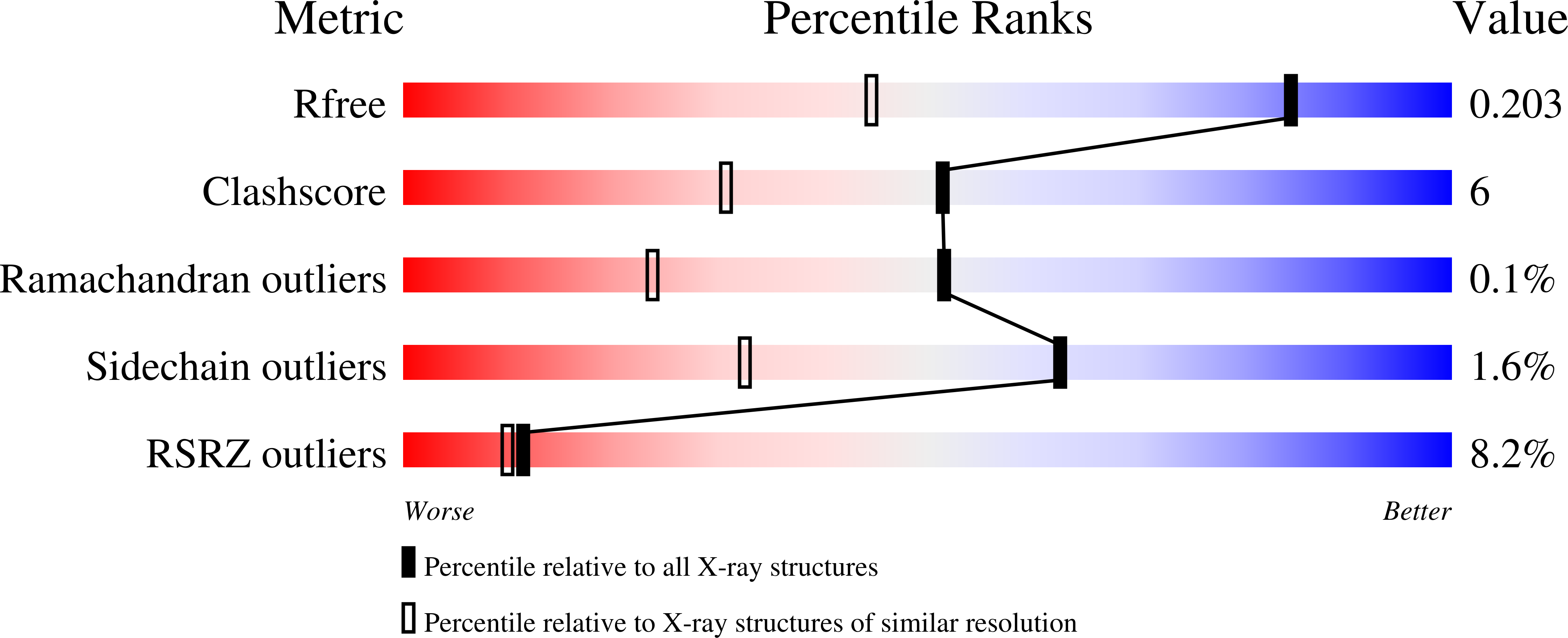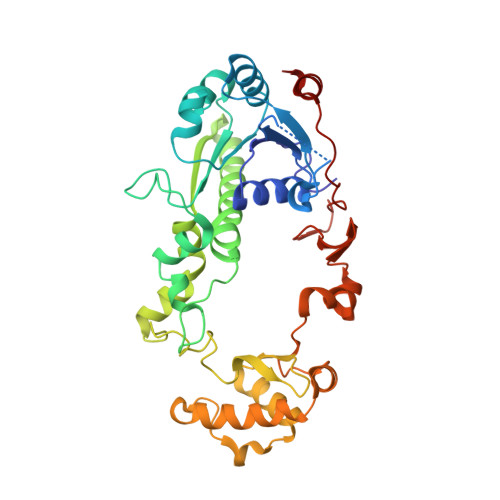The Enolization Chemistry of a Thioester-Dependent Racemase: The 1.4 A Crystal Structure of a Reaction Intermediate Complex Characterized by Detailed Qm/Mm Calculations.
Sharma, S., Bhaumik, P., Schmitz, W., Venkatesan, R., Hiltunen, J.K., Conzelmann, E., Juffer, A.H., Wierenga, R.K.(2012) J Phys Chem B 116: 3619
- PubMed: 22360758
- DOI: https://doi.org/10.1021/jp210185m
- Primary Citation of Related Structures:
2YIM - PubMed Abstract:
In the active site of the bacterial α-methylacyl-CoA racemase of Mycobacterium tuberculosis (MCR), the chirality of the 2-methyl branched C2-atom is interconverted between (S) and (R) isomers. Protein crystallographic data and quantum mechanics/molecular mechanics (QM/MM) computational approaches show that this interconversion is achieved via a planar enolate intermediate. The crystal structure, at 1.4 Å, visualizes the mode of binding of a reaction intermediate analogue, 2-methylacetoacetyl-CoA, in a well-defined planar enolate form. The computational studies confirm that in the conversion from (S) to (R), first a proton is abstracted by Nδ1 (His126), and subsequently the planar enolate form is reprotonated by Oδ2 (Asp156). The calculations also show that the negatively charged thioester oxygen of the enolate intermediate is stabilized by an oxyanion hole formed by N (Asp127), as well as by the side chain atoms of the catalytic residues, Asp156 and His126, both being protonated simultaneously, at the intermediate stage of the catalytic cycle. The computational analysis also reveals that the conversion of the (S)- to (R)- chirality is achieved by a movement of 1.7 Å of the chiral C2-carbon, with smaller shifts (approximately 1 Å) of the carbon atom of the 2-methyl group, the C3-atom of the fatty acid tail, and the C1-carbon and O1-oxygen atoms of the thioester moiety.
Organizational Affiliation:
Biocenter Oulu and Department of Biochemistry, University of Oulu, P.O. Box 3000, Oulu, FI-90014, Finland.

















